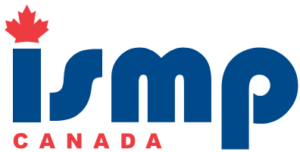INTRODUCTION
Medication orders (prescriptions) conveyed verbally by telephone or in person are prone to errors. Problems can arise if a medication order is miscommunicated, misheard, or incorrectly transcribed. ISMP Canada encourages the use of written orders, including electronic orders, to prevent medication errors.1 However, the current pandemic has increased the need for and frequency of telephone and other verbal orders. This bulletin shares recommendations for practitioners to minimize the risk of errors when communicating medication orders verbally.
INCIDENT EXAMPLE
Temporary changes in federal legislation now permit the use of telephone orders for controlled substances. A community pharmacy reported to ISMP Canada that a miscommunication in a telephone order for hydromorphone led to dispensing of the oral liquid formulation instead of the intended injectable formulation. The oral product was injected by a home care nurse, which resulted in harm to the patient.
ISMP Canada has published several bulletins describing medication errors associated with telephone and other types of verbal orders.2-5 Various contributing factors have been identified, including sound-alike drug or patient names, similar-sounding numbers, a practitioner’s use of unfamiliar terminology or acronyms with multiple meanings, background noise and other factors affecting reception clarity, workflow disruptions, and caregivers’ lack of familiarity with individual patients and their needs.6,7
RECOMMENDATIONS FOR COMMUNICATING TELEPHONE AND OTHER VERBAL ORDERS 6,8
ISMP Canada continues to recommend the use of written orders, including electronic orders, as preferred practice. However, when this is not feasible, the following safe practices are provided.
Practitioners who are prescribing medications6,9
- Allow sufficient time to state the order clearly and for the person receiving it to read it back.8,10
- State your name, licence number, and contact information.
- Say and then spell out the patient’s name and provide a second identifier (e.g., address, birth date).
- Incorporate all the elements of a complete medication order, including drug name, dosage form, dose and strength (if applicable), route of administration, directions for use, and quantity to be dispensed and/or duration of therapy; for prescriptions that are given to community pharmacies, also provide the number of refills and/or the refill interval.
- Communicate drug names by first saying and then spelling them out. Provide both the generic and brand names, especially for recognized look-alike, sound-alike medication pairs.11 It may be helpful to use a phonetic alphabet to distinguish between sound-alike letters (e.g., “m” as in Mary or “n” as in Nancy).
- Explicitly state the indication for the drug, to reduce the risk of misinterpretation.
- Communicate numbers using two different approaches. For example, because the number 15 can easily be misheard as 50, a prescription for “15 mg” should also be communicated as “one-five-milligrams”.
- Fully verbalize all instructions, avoiding any abbreviations. For example, replace “BID” with “twice a day”, and replace “PO” with “by mouth” or “orally”.
- Include the patient’s weight for pediatric patients and for all weight-based medication orders.
Practitioners who are receiving prescriptions and medication orders7,9
- Obtain the prescriber’s name, licence number, and contact information at the start of the call.
- Immediately transcribe or enter the medication order into its permanent record (e.g., patient chart, pharmacy hard copy and/or profile) to facilitate accurate documentation of the prescription. Delaying this documentation step can contribute to erroneous transcription.8
- Ask the prescriber to state the indication for use of the medication, if it is not provided as part of the order.
- Clarify any ambiguous aspects of the prescription.
- Read the complete order back to the prescriber as documented, for verification and to catch any errors (the “read-back” technique).
- Request confirmation from the prescriber that the read-back matches the intended order.
CONCLUSION
Although telephone and other verbal orders are known to be susceptible to error, they may be necessary in some circumstances. Good communication practices, especially use of the read-back technique, can help to mitigate risk. This bulletin is provided as a reminder of safety practices for communicating telephone and other verbal orders.
![]()
The Canadian Medication Incident Reporting and Prevention System (CMIRPS) is a collaborative pan-Canadian program of Health Canada, the Canadian Institute for Health Information (CIHI), the Institute for Safe Medication Practices Canada (ISMP Canada) and Healthcare Excellence Canada (HEC). The goal of CMIRPS is to reduce and prevent harmful medication incidents in Canada.
Funding support provided by Health Canada. The views expressed herein do not necessarily represent the views of Health Canada.

The Healthcare Insurance Reciprocal of Canada (HIROC) provides support for the bulletin and is a member owned expert provider of professional and general liability coverage and risk management support.

The Institute for Safe Medication Practices Canada (ISMP Canada) is an independent national not-for-profit organization committed to the advancement of medication safety in all healthcare settings. ISMP Canada’s mandate includes analyzing medication incidents, making recommendations for the prevention of harmful medication incidents, and facilitating quality improvement initiatives.
Report Medication Incidents (Including near misses)
Online: ismpcanada.ca/report/
Phone: 1-866-544-7672
ISMP Canada strives to ensure confidentiality and security of information received, and respects the wishes of the reporter as to the level of detail to be included in publications.
Stay Informed
Subscribe to the ISMP Canada Safety Bulletins and Newsletters.
This bulletin shares information about safe medication practices, is noncommercial, and is therefore exempt from Canadian anti-spam legislation.
Contact Us
Email: cmirps@ismpcanada.ca
Phone: 1-866-544-7672
©2025 Institute for Safe Medication Practices Canada.
